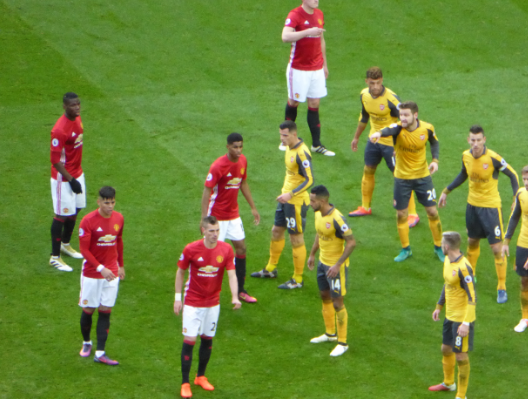A Brief History of Arsenal FC
Arsenal Football Club, established in 1886 in Woolwich, has evolved into one of the most storied teams in English football. The club initially began as a works team for the Royal Arsenal munitions factory and quickly rose within the footballing ranks. In 1893, Arsenal joined the Football League, marking the beginning of a significant journey that would see the team consolidate its reputation. The move to Highbury in 1913 symbolized the club’s ambition, providing a venue that would witness numerous historic matches and moments.
Under the management of Herbert Chapman, who took charge in the 1920s, Arsenal experienced a transformative period that redefined the club’s identity and strategy. Chapman introduced innovative training techniques and strategies, leading Arsenal to two league titles in 1930 and 1931. His visionary leadership laid the framework for the club’s enduring success, and Chapman remains a pivotal figure in the history of Arsenal. The 1970s brought about another landmark era for the club, highlighted by their iconic double victories in the 1970 and 1971 seasons, where they clinched both the FA Cup and the league title in the same year.
Throughout its history, Arsenal has been home to numerous legendary players, including the likes of Thierry Henry and Tony Adams, whose contributions have shaped the club’s legacy. The evolution of Arsenal has also witnessed challenges, such as fluctuating performances in the Premier League and the ever-increasing competition from clubs like Manchester United and Chelsea. Yet, the Bonds of loyalty and tradition have ensured that Arsenal Football Club remains an integral part of the football landscape. As the club continues to navigate the complexities of modern football, its rich history serves as a guiding force towards future aspirations.
The Glory Years: Arsenal’s Dominance in the 1990s and Early 2000s
The 1990s and early 2000s marked a period of unprecedented success for Arsenal Football Club, characterized by a series of triumphs that would solidify its legacy in English football. Under the astute management of George Graham and later Arsène Wenger, Arsenal established itself as a dominant force in both domestic and European competitions. The club secured multiple league titles, with notable victories in 1991 and the late 1990s, but it was the 2003-04 season that distinguished Arsenal as one of the greatest teams in football history. This remarkable campaign, in which the team went unbeaten throughout the entire league, earned them the epithet “The Invincibles.”
During this era, Arsenal showcased a distinctive style of play that emphasized fluid attacking movement and technical prowess, which became a hallmark of Wenger’s philosophy. The infusion of players like Thierry Henry and Patrick Vieira brought not only talent but also passion and leadership to the squad. Henry, with his electrifying pace and clinical finishing, became a symbol of Arsenal’s attacking prowess, while Vieira’s commanding presence in midfield was essential to the team’s balance and creativity. Together, they catalyzed a period of consistent success, including several FA Cup victories, underscoring Arsenal’s ability to compete at the highest level.
This legacy extended beyond the pitch, as Arsenal’s achievements during this time contributed significantly to the club’s cultural impact, both in England and internationally. The style imparted by Wenger and the success of players like Eberechi Eze, who later embraced the Gunners’ philosophy, influenced a generation of footballers and fans alike. As rivals such as Manchester United emerged, the competition intensified, but Arsenal’s legacy during this golden era undoubtedly shaped the future of English football and cemented its reputation on the global stage.
Challenges and Changes: Recent Years of Arsenal FC
In recent years, Arsenal FC has confronted a variety of challenges that have significantly shaped the club’s trajectory. Transitioning from the iconic Highbury to the Emirates Stadium represented not just a physical move but a financial reconfiguration. The new stadium, while providing state-of-the-art facilities, posed significant financial implications, including increased debt and the pressure to maintain competitive squad investments. The expectation for success amplified as Arsenal sought to balance productive player transfers amidst strict financial constraints.
The club’s pursuit of excellence has been met with intense competition, particularly from rival teams such as Manchester United and emerging clubs, which have escalated their own ambitions through strategic signings, including key players like Viktor Gyökeres and the opportunistic recruitment of emerging talents. These developments have often left Arsenal at a crossroads as they strive to reclaim their status within the Premier League and European competitions.
Managerial changes have further influenced Arsenal’s fortunes, with each new appointment bringing distinct philosophies and tactical approaches. The challenge lies in cultivating a stable identity while adapting to both changing playing styles and fan expectations. Supporters have witnessed significant turnover in the squad, including high-profile transfers and promising signings, such as Eberechi Eze, which have contributed to a dynamic but inconsistent performance on the pitch.
Furthermore, the evolving expectations of the fan base play a pivotal role in shaping Arsenal’s identity. Today’s supporters demand not only results but also a clear vision of the club’s long-term aspirations. As Arsenal faces these ongoing challenges, the interplay of financial stability, managerial consistency, and supporter satisfaction continues to shape the legacies of triumphs and challenges that define this historic club.
The Future of Arsenal: Prospects and Aspirations
As Arsenal navigates the ever-evolving landscape of domestic and European football, the club is positioned at a critical juncture. The current squad, featuring promising talents such as Eberechi Eze and skilled players like Viktor Gyökeres, presents a blend of youthful energy and experienced leadership. This combination holds potential not just for immediate competition but for sustainable growth in the coming years. The management under the current regime appears to be focusing on strategic recruitment, aiming to enhance the squad’s depth while allowing homegrown talents to flourish.
A vital aspect of Arsenal’s future is its commitment to youth development. The club’s academy has historically produced exceptional players who have made significant contributions at the highest level. By investing in this system, Arsenal not only nurtures future stars but also preserves the club’s identity. Fans often express the desire to see more homegrown talent representing the team, and prioritizing this can reconnect supporters with the club’s rich heritage, fostering a deeper sense of loyalty and pride.
Moreover, the recruitment strategy that revolves around scouting players who can adapt to the club’s ethos plays an essential role. The focus should not solely be on high-profile transfers; rather, a balanced approach that considers character, fit, and long-term potential will greatly influence success. As seen recently, avenues for acquiring talents like Eze can enhance team dynamics while creating a competitive edge.
With aspirations to reclaim a prominent position in both the Premier League and UEFA competitions, the collaboration between management, players, and fans remains paramount. Arsenal’s storied history serves as a foundation for rebuilding aspirations, emphasizing the importance of unity and shared goals within the club’s community. In this, the balancing act of honoring legacy while embracing progress becomes crucial as Arsenal looks towards a bright future.

